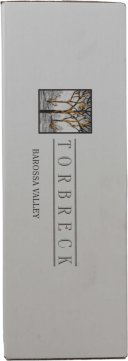Any price
By Farr Tout Prés Pinot Noir
By Farr Tout Près Pinot Noir is pale ruby colour with medium intense aromas of crushed raspberries, beets, loam, truffles and a hint of lavender. Crisp with a medium level of fine tannins matched to the concentrated fruit, it has a long minerally finish.
Te Mata Awatea Cabernet Merlot
Te Mata make some sublime Bordeaux style red wines and we've been blessed in recent years with some outstanding vintages. This years release has wonderful floral aromas with intense blackberry, currant and dark plum flavours lead to a rich supple palate with a sustained finish.
Henschke Mount Edelstone Shiraz
Henschke Mount Edelstone is one of the most important single vineyard sites in Australia. The 90 year old vines has been producing a single vineyard Shiraz since 1952 and is one of Australia's truly great wines. The nose has sweet ripe plum and blueberry aromas and the palate is intense and deeply flavoured. While enjoyable upon release, this is a wine that will enjoy a decade or more in the cellar.
Pressing Matters Pinot Noir
Moss Wood Ribbon Vale Cabernet Sauvignon
This wine shows the style of the vintage and quite likely the impact of the small crop. In such years, Cabernet Sauvignon in particular, has a complex but somewhat subdued nose, where the wine hints of the underlying power and complexity but takes years to reveal its true colours. So here we see smouldering red currant, black currant and mulberry, with a floral, violet lift, sitting over cedar and tar. On the palate there is concentration and length - dark fruits combining with firm tannin and leather and tarry notes.
Giant Steps LDR Pinot Noir Syrah
By Farr Shiraz
Shiraz By Farr is one of Victoria's premier cool-climate Shiraz's, made by the iconic Geelong winemaker, Gary Farr. The nose is incredibly complex showing notes of red and black fruits, spice, black pepper and iodine. In the mouth the wine is incredibly fresh. Wonderfully braced fruit and fine framing tannins and an outstanding length.
Torbreck RunRig Shiraz
The flagship of the Torbreck stable. Recently been elevated to 'Exceptional' status in Langton's Fine Wine Classification, it is a wine of utmost power and density. Famous for rich concentration and opulent power, this exceptional Australian Shiraz is as popular abroad as it is at home. Definitely one to place in the cellar and simply forget about - let the patience reward you over 10 or more years time.
Howard Park Leston Cabernet Sauvignon
Howard Park Leston Cabernet Sauvignon, a wine of good structure and power. Bright red crimson in colour. Red currant fruits, a hint of violets and oak on the nose. This full bodied wine had great elegance on the palate and a lengthy finish. No doubt one of the best example of the region.
Hentley Farm The Beauty Shiraz
The perfect counterpoint to its other half in the Hentley Farm stable, The Beast, The Beauty is made from cooler climate Shiraz and co-fermented with a dollop of Viognier. Utterly seductive like some dark pool calling you to dive in, it is complex, elegant and aptly named.



































